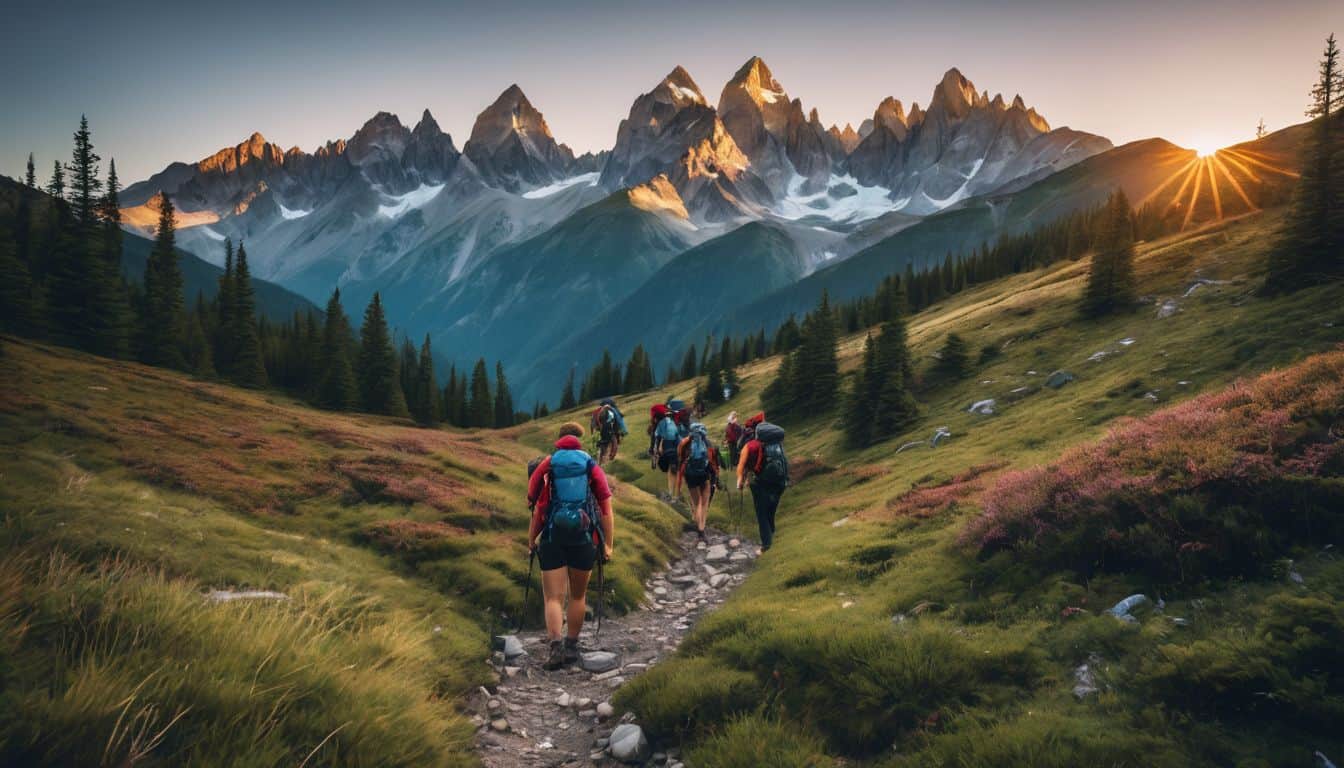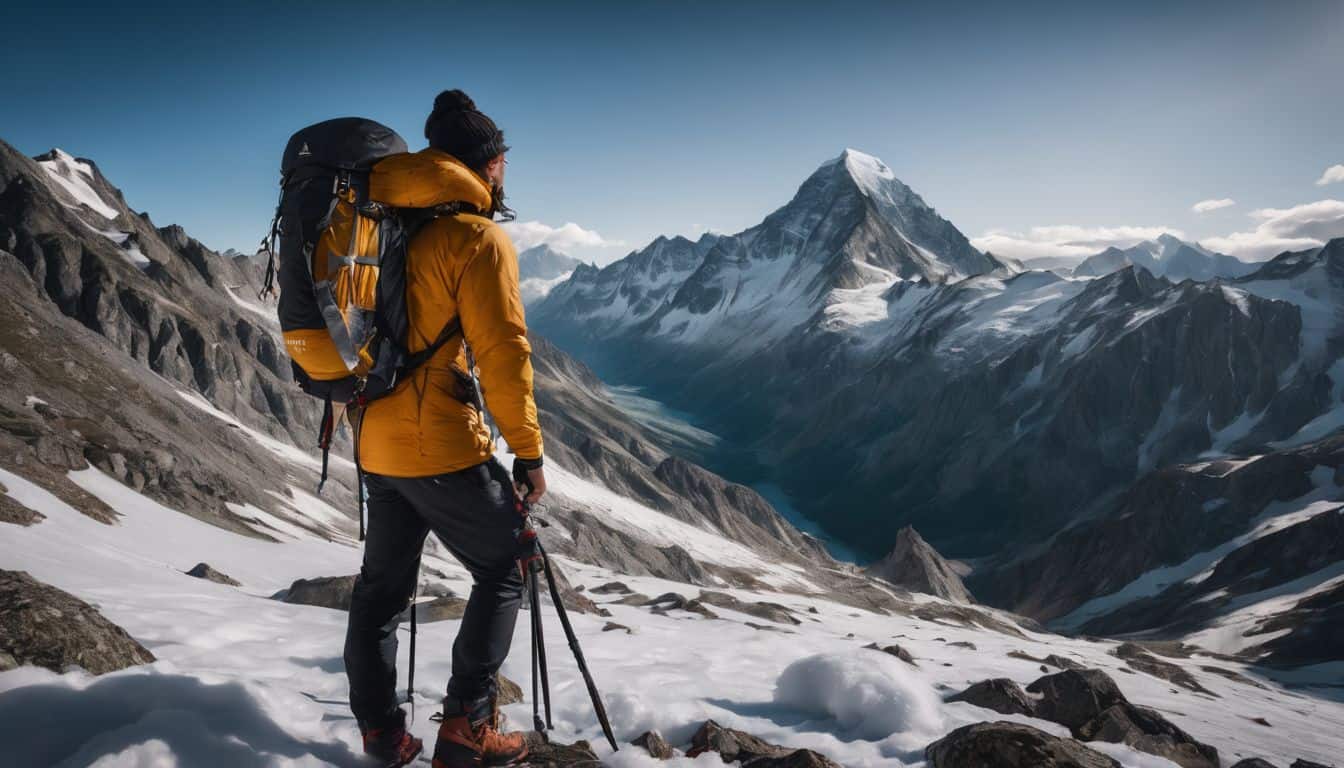High-altitude camping, typically defined as camping above 8,000 feet (2,400 meters), offers breathtaking views and unique challenges that appeal to adventurous spirits. While it shares some similarities with desert camping, high-altitude environments present their own set of considerations.
Understanding High Altitude and Its Effects
At high altitudes, the decreased oxygen levels can lead to altitude sickness, manifesting as Acute Mountain Sickness (AMS), High Altitude Pulmonary Edema (HAPE), or High Altitude Cerebral Edema (HACE). Understanding these conditions is crucial for a safe experience. AMS is the most common form, characterized by headaches, nausea, and fatigue.
HAPE and HACE are more severe conditions that can be life-threatening if not addressed promptly. The body’s response to high altitude includes increased breathing rate and heart rate as it attempts to compensate for the lower oxygen levels. These physiological changes can affect sleep quality and overall energy levels, making it essential to listen to your body and respect its limits.
Preparing for High-Altitude Camping
Physical fitness is key to enjoying high-altitude adventures. Focus on cardiovascular endurance and strength training with loaded backpacks. Gear considerations should include cold weather equipment, as temperatures can drop significantly at higher elevations. Start your training regimen several months before your trip, gradually increasing the intensity and duration of your workouts. Include activities like hiking with a weighted pack, stair climbing, and high-intensity interval training to simulate the demands of high-altitude trekking.
For gear, invest in a quality four-season tent, a sleeping bag rated for low temperatures, and layered clothing to adapt to changing conditions. Don’t forget essentials like a reliable water filtration system and emergency communication devices.
Acclimatization Strategies
Gradual ascent is crucial for acclimatization. Follow the “climb high, sleep low” principle and limit your ascent to 300-500 meters per day. Include rest days in your schedule and stay well-hydrated to aid acclimatization. The “climb high, sleep low” principle involves ascending to a higher altitude during the day for short periods, then returning to a lower altitude to sleep. This helps your body adapt more effectively to the altitude changes.
On rest days, engage in light activities to keep your body active without overexertion. Hydration is critical at high altitudes, as the body loses more water through respiration and increased urination. Aim to drink at least 3-4 liters of water per day, and consider electrolyte supplements to maintain proper balance. Avoid alcohol and excessive caffeine, as these can interfere with acclimatization and hydration.

Safety Measures and Best Practices
Recognizing and responding to altitude sickness symptoms is vital. Don’t hesitate to descend if symptoms occur. Be prepared for rapid weather changes, which are common in mountain environments. Learn to identify early signs of altitude sickness such as headaches, dizziness, and nausea.
Carry medication like Diamox as a preventive measure, but remember that descent is the most effective treatment. Always have an emergency plan and know the nearest routes to lower altitudes. Weather in mountains can change rapidly, so pack appropriate gear for various conditions, including waterproof and windproof layers. Check weather forecasts regularly and be prepared to adjust your plans accordingly.
Camping Techniques for High Altitudes
Choose campsites that offer wind protection and set up your tent securely. Cooking at high altitudes may require longer times due to lower air pressure. Staying hydrated is crucial, so plan your water sources carefully. Look for natural windbreaks like large boulders or dense tree lines when selecting your campsite.
Use extra guy lines and sturdy stakes to secure your tent against strong mountain winds. For cooking, bring a stove with good cold-weather performance and expect longer cooking times for foods like rice or pasta. Water sources can be scarce at high altitudes, so carry a reliable water filtration system and know the locations of water sources along your route.
Environmental Considerations
Practice Leave No Trace principles to protect fragile high-altitude ecosystems. Be aware of wildlife and follow proper safety protocols. High-altitude environments often have delicate flora and slow-growing vegetation, so stick to established trails and campsites whenever possible.
Pack out all waste, including human waste if required by local regulations. Be mindful of wildlife, especially in areas with large predators. Store food properly and maintain a safe distance from any animals you encounter. Learn about the specific ecosystem you’re visiting and any special conservation efforts in place.
Benefits of High-Altitude Camping
High-altitude camping offers unique physical and mental challenges, stunning landscapes, and opportunities for personal growth. The sense of accomplishment from conquering a high peak is unparalleled. The physical demands of high-altitude trekking can significantly improve your overall fitness and endurance.
Mentally, overcoming the challenges of high-altitude environments can boost confidence and resilience. The breathtaking views and unique ecosystems found at high altitudes provide unforgettable experiences and photo opportunities. Many campers report a profound sense of connection with nature and a renewed perspective on life after high-altitude adventures.
Conclusion
While high-altitude camping shares some similarities with bushcraft camping, it requires specialized knowledge and preparation. For those new to camping, understanding the various types of camping can help you choose the right adventure for your skill level.
Remember, safety should always be your top priority. Familiarize yourself with desert camping survival tips and winter camping techniques as these skills can be valuable in high-altitude environments as well. The extreme conditions often found at high altitudes can share similarities with both desert and winter environments, making these skills transferable and potentially life-saving.
With proper preparation and respect for the environment, high-altitude camping can provide some of the most memorable outdoor experiences of your life. Embrace the challenge, stay safe, and enjoy the magnificent views that only mountain peaks can offer.

Leave a Reply